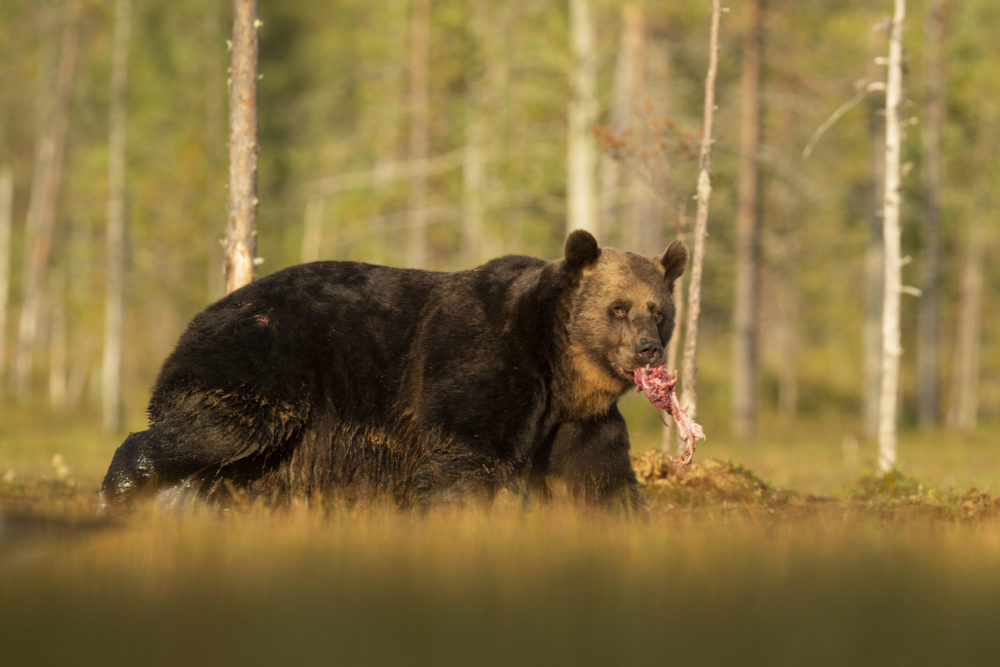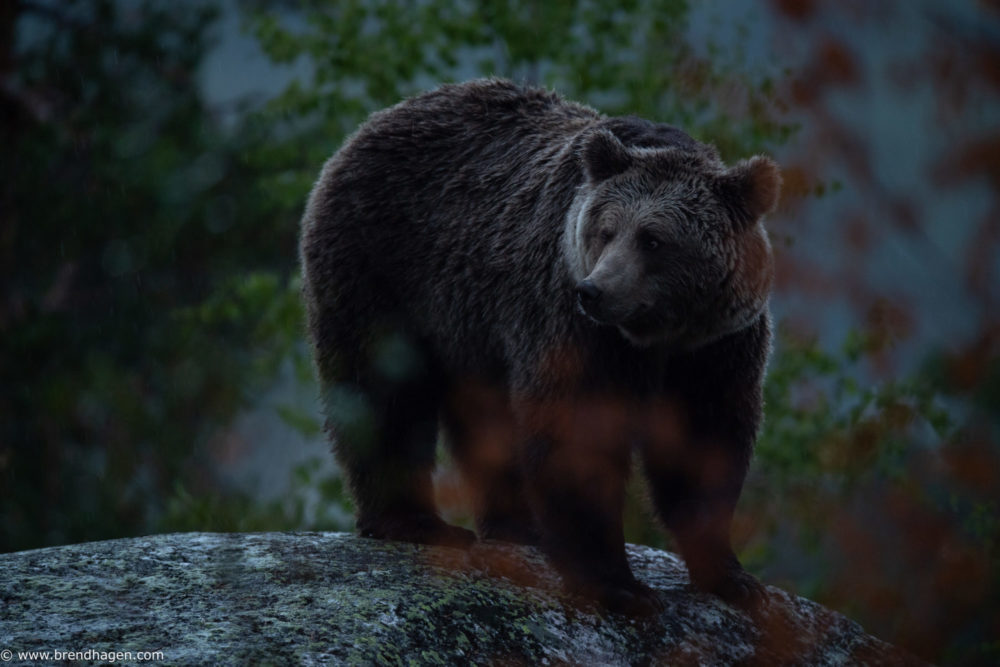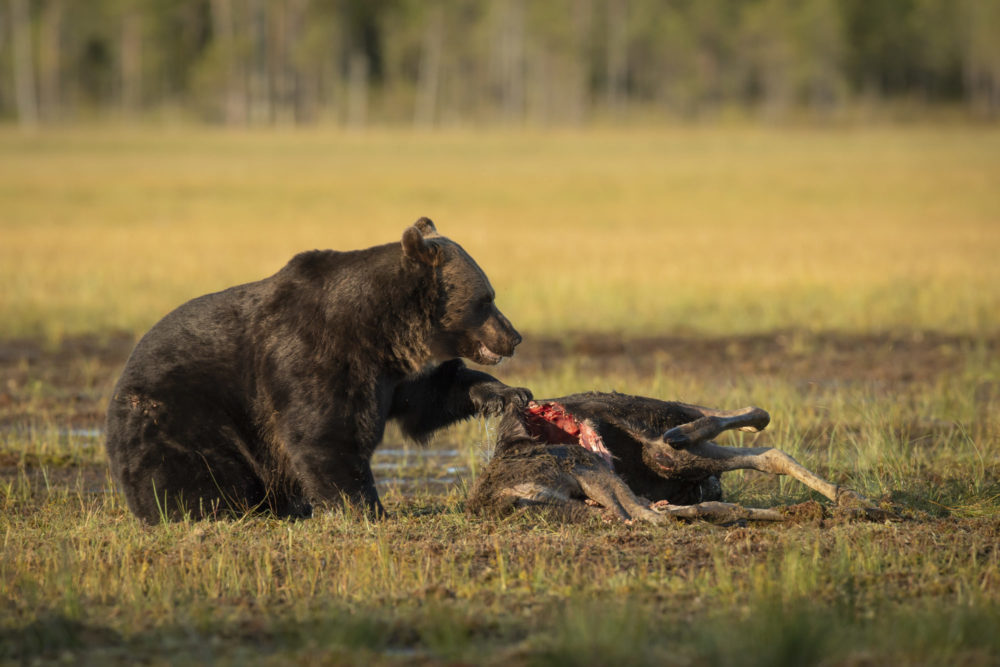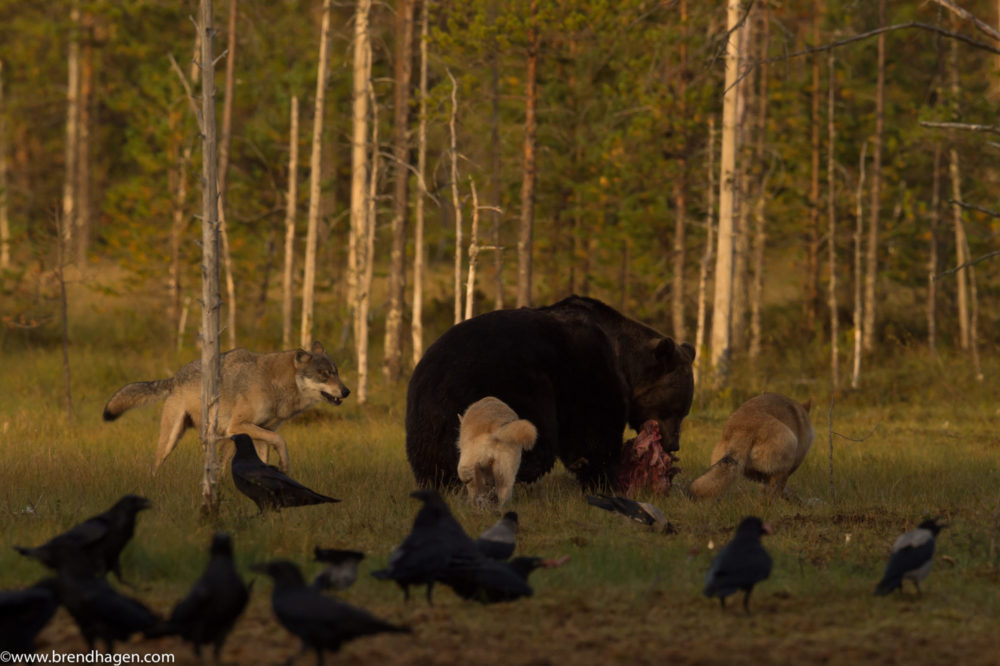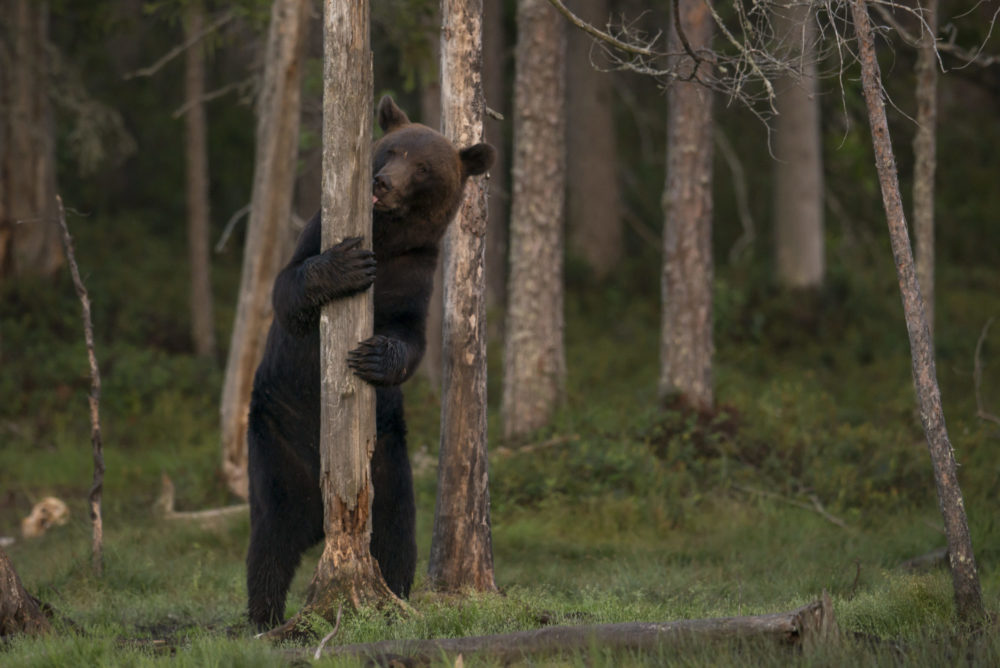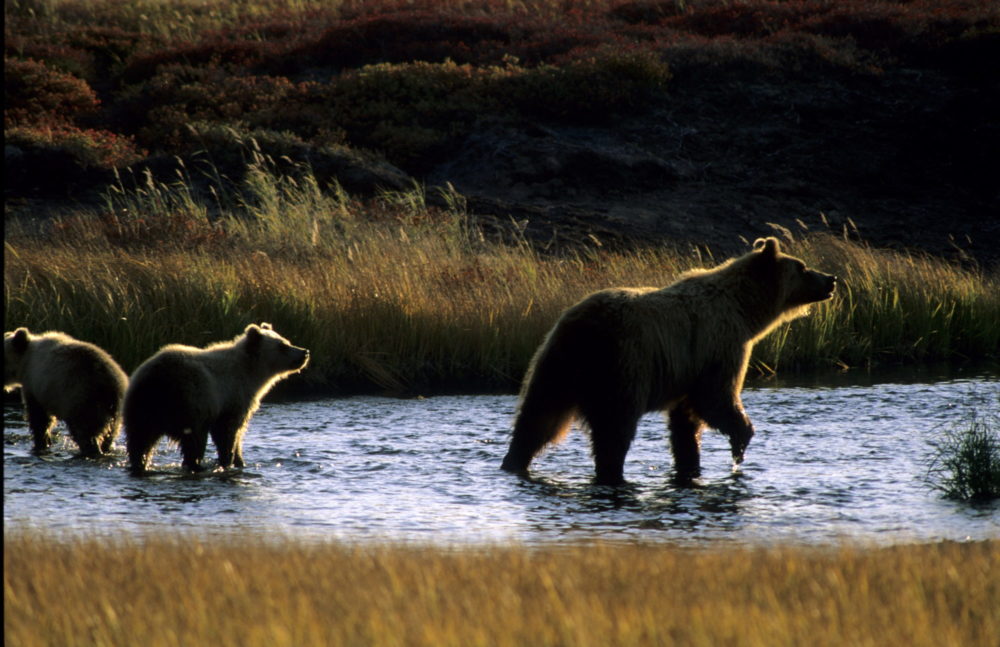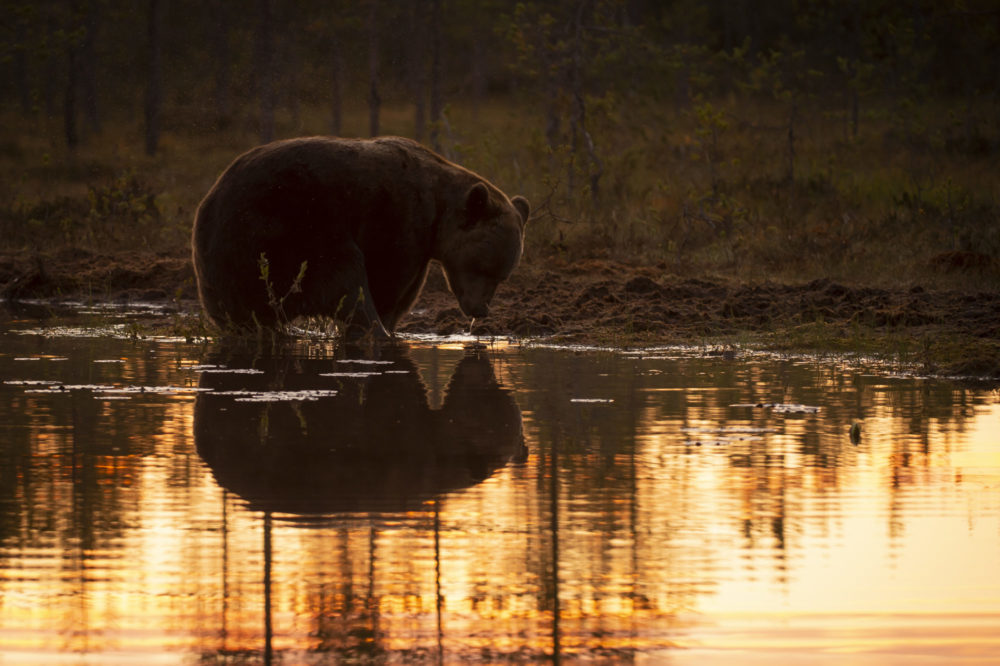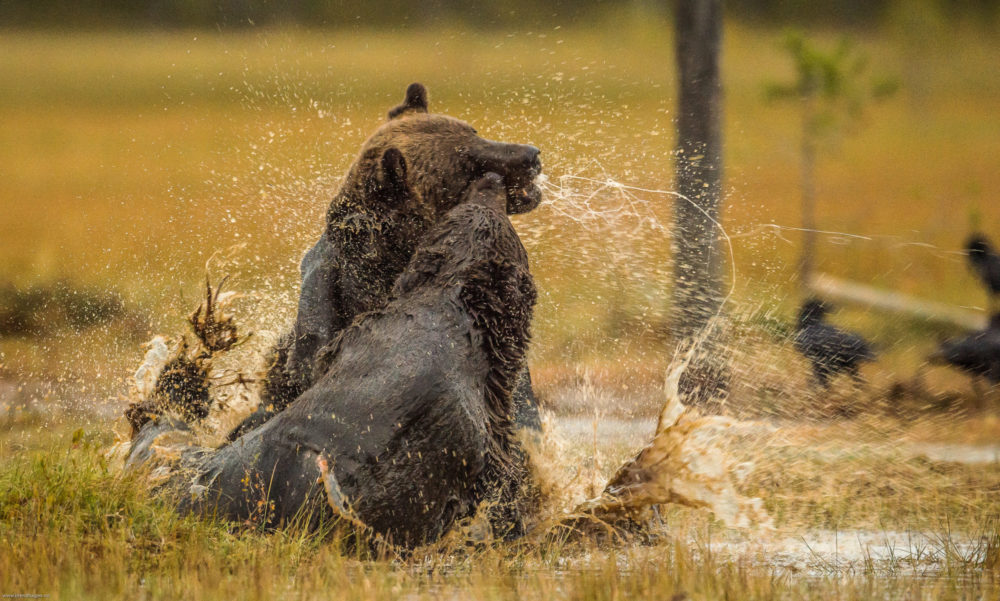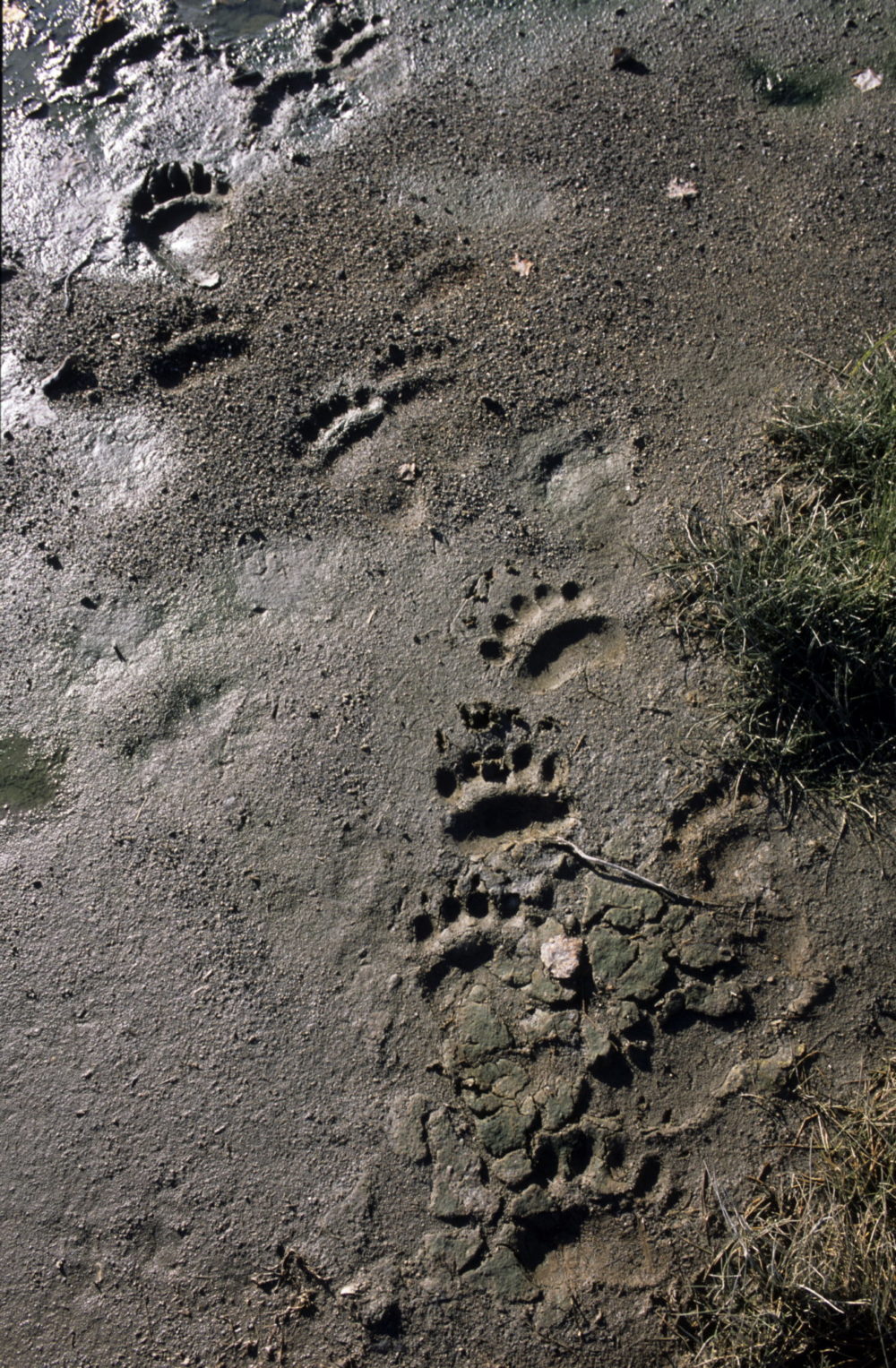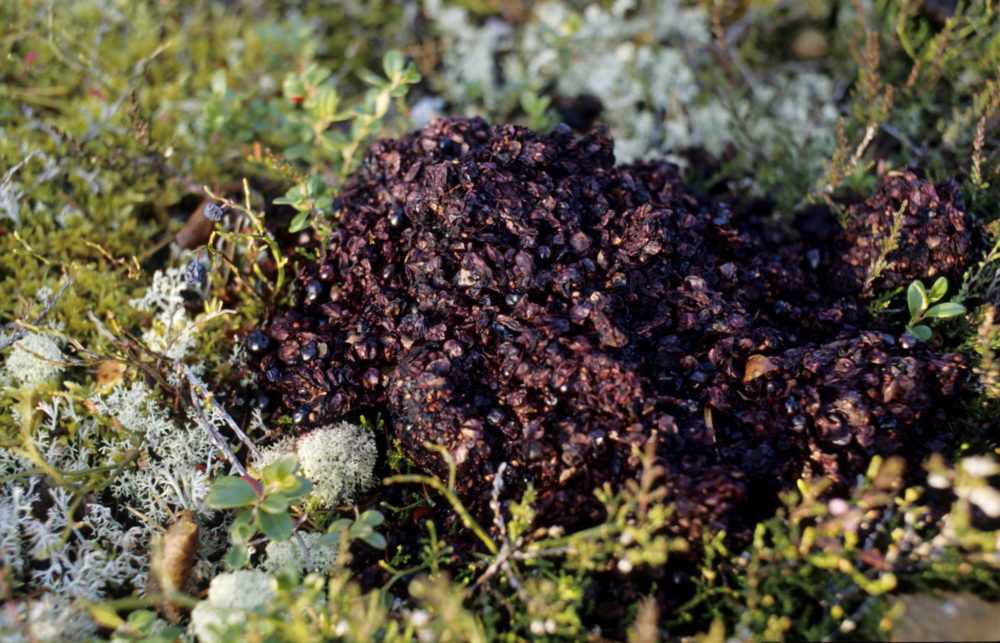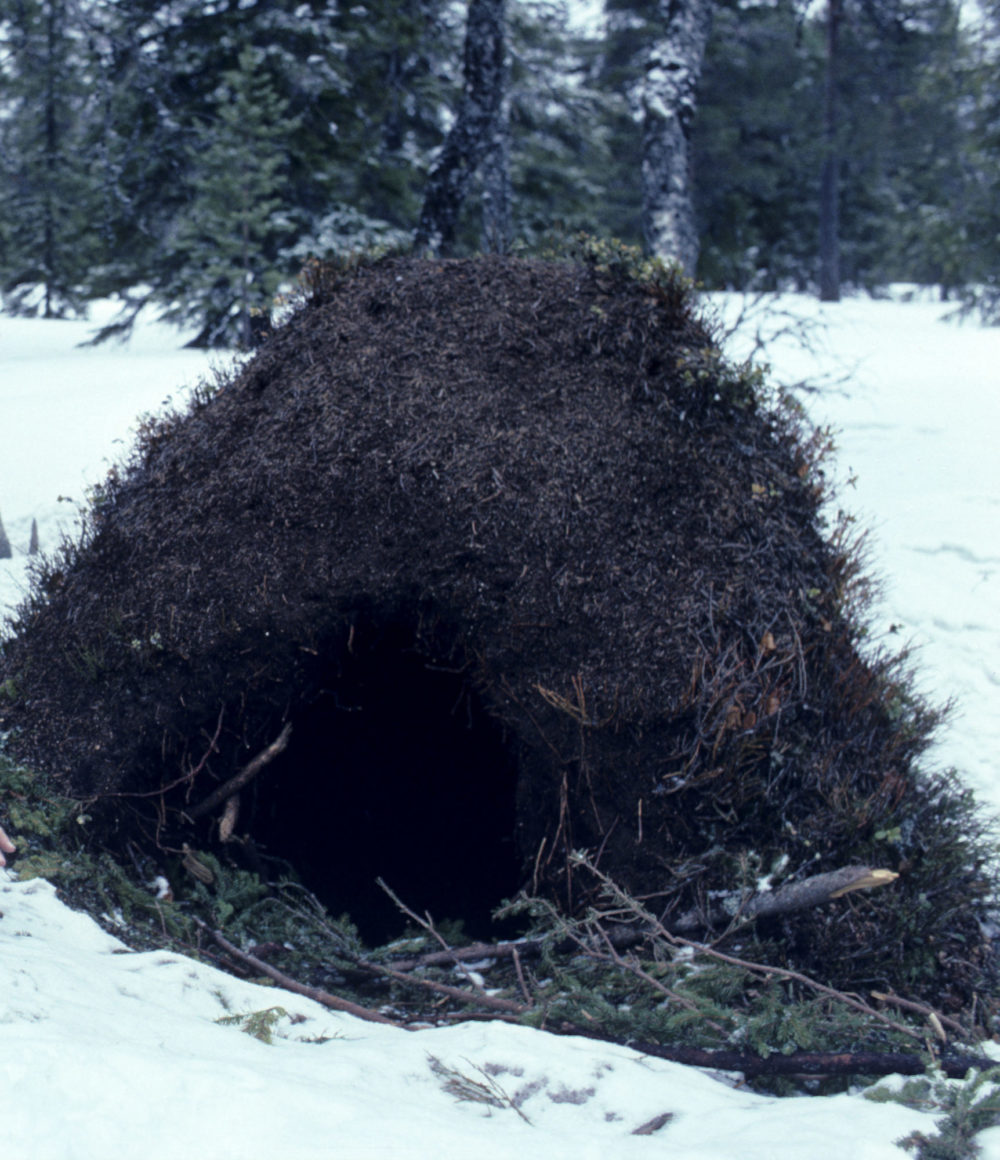About bears
The bear is mainland Norway’s largest predator and the second-largest mammal living in forests. Only the moose is larger. On these pages, you can learn all about the big brown bruin!
Bear facts
Latin: Ursus arctos.
Family: Bear family (Ursidea)
Length: 140 – 280 cm.
Weight: 60 – 300 kg.
Breeding season: Spring and summer.
Number of young: 1 – 3.
Life span: Up to 30 years.

Bear tracks
Bear tracks are large with marks made by five toes and long claws. The back paw is reminiscent of a human foot, while the front paw is slightly shorter. The largest toe is on the outside of the footprint, so the opposite to us!
